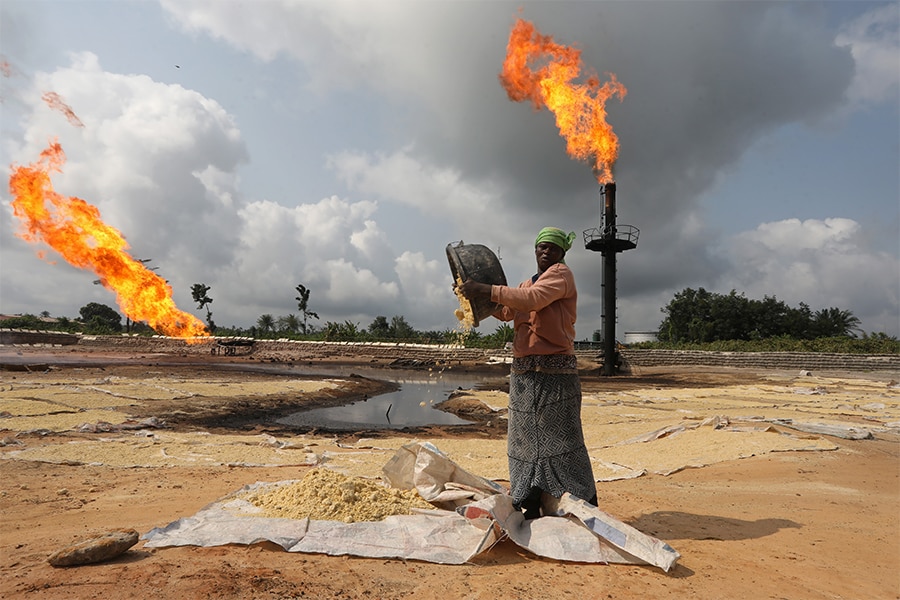
Oil giants are selling dirty wells to buyers with looser climate goals: study
The world's largest energy companies are expected to sell off more than $100 billion of oil fields and other polluting assets to cut their emissions and make progress toward their corporate climate goals. However, they frequently sell to buyers that disclose little about their operations, have made few or no pledges to combat climate change, and are committed to ramping up fossil fuel production
 A woman near a gas flaring furnace in Ughelli, Delta State, Nigeria September 17, 2020. (Credits: Afolabi Sotunde/ Reuters)
A woman near a gas flaring furnace in Ughelli, Delta State, Nigeria September 17, 2020. (Credits: Afolabi Sotunde/ Reuters)
When Royal Dutch Shell sold off its stake in the Umuechem oil field in Nigeria last year, it was, on paper, a step forward for the company’s climate ambitions: Shell could clean up its holdings, raise money to invest in cleaner technologies, and move toward its goal of net zero emissions by 2050.
As soon as Shell left, however, the oil field underwent a change so significant it was detected from space: a surge in the wasteful burning of excess gas in towering columns of smoke and fire known as flaring, which emits planet-warming greenhouse gases, as well as soot, into the atmosphere.
Around the world, many of the largest energy companies are expected to sell off more than $100 billion of oil fields and other polluting assets in an effort to cut their emissions and make progress toward their corporate climate goals. However, they frequently sell to buyers that disclose little about their operations, have made few or no pledges to combat climate change, and are committed to ramping up fossil fuel production.
New research to be released Tuesday showed that, of 3,000 oil and gas deals made between 2017 and 2021, more than twice as many involved assets moving from operators with net-zero commitments to those that didn’t, than the reverse. That is raising concerns that the assets will continue to pollute, perhaps even at a greater rate, but away from the public eye.
“You can move your assets to another company, and move the emissions off your own books, but that doesn’t equal any positive impact on the planet if it’s done without any safeguards in place,” said Andrew Baxter, who heads the energy transition team at the Environmental Defense Fund, which performed the analysis.
©2019 New York Times News Service







